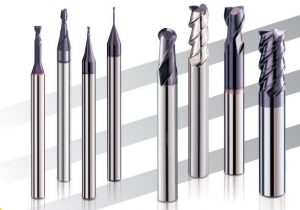
With regard to the heat generated during micro-cutting, some university researchers have come to different conclusions. Purdue University’s research suggests that micro-cutting tools do not produce large amounts of cutting heat. This is because the micro-cutter needs high-speed rotation, and any heat is immediately taken away by the chips. These chips are very small. But with a large surface area ratio.
The effect of the coating is not to take away the heat, because the heat generated is very small. Processing, the spindle speed range of 250,000 ~ 750,000r / min (depending on the workpiece material and load conditions), the tip temperature of 27 ~ 33 ℃.
Dr. Rob Robinson, a former Purdue University doctor who worked with Jackson on the coating study, agrees that “the coating designed to reduce and take away the heat at the macro scale is completely unnecessary at the microscopic scale because at the microscopic scale , Cutting heat is not the cause of tool wear, the main reason is the mechanical force (rather than heat) caused by mechanical wear. Therefore, he pointed out that the coating for micro-tools only need to be used to improve the wear resistance of the tool.
In order to determine the temperature rise during micro-processing, Purdue University researchers conducted a finite element calculation. The relatively low melting point (such as sulfur, calcium, potassium, etc.) in the processed material was studied. “If you see a melting point (such as a small molten droplet) when processing an element with a melting point of 50 ° C, you can say that the cutting temperature is about 50 ° C. But we do not see any signs of melting,” Robinson explains. , So we conclude that micro – scale cutting does not produce a lot of cutting heat.
Due to the low cutting temperature, no coolant is required for processing, but researchers at Purdue University lead compressed air to the cutting zone. To help chip removal and to accelerate the oxidation of the workpiece material. “If the metal is not rapidly oxidized, the friction coefficient increases (even with the coating tool),” Jackson explains. “This leads to an increase in temperature, because it produces metal and metal bonds rather than metals and oxides Of the bond “.